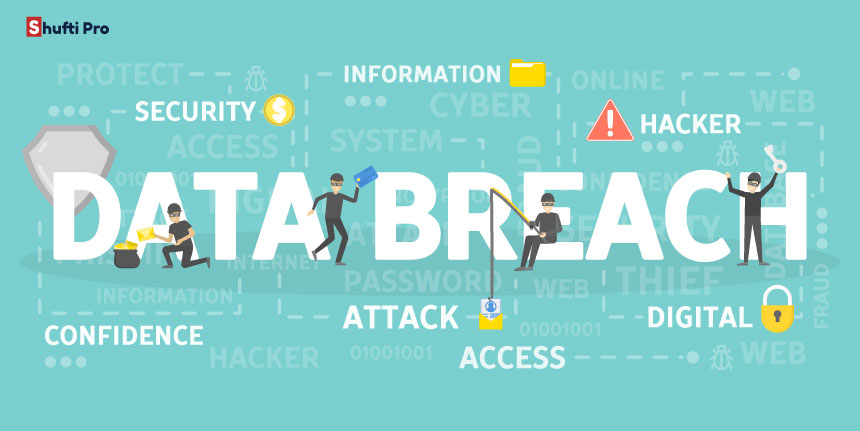ID verification prevents 8 Security Issues of businesses

The biggest concern for businesses, in terms of safety, nowadays is online or cybersecurity. As data breaches across different companies become increasingly common, online security becomes a major concern for enterprises storing large amounts of user data. The estimated cost of a single data breach will reach $150 million by 2020, costing $2.1 trillion annually. In January 2019 alone, a total of 1.76 billion identity records have been compromised due to such data breaches. In the light of such gaping security concerns, companies must ensure the safety of their user data. Robust security measures including data encryption, two-factor authentication and identity theft protection need to be practised by businesses.
As the internet proliferates the fabric of the world, consumers and businesses become more and more dependent upon it. Securing data online is becoming increasingly tricky, particularly for companies that engage customers online. Progression in technology is giving way to advanced systems. Cybercriminals are also becoming more sophisticated in their methods to compromise customer data. In order to keep up with such threats businesses must also embrace modern technology tools to keep out fraudsters. Some of the daunting security concerns faced by businesses today include;
1. Increased Data Breaches
The year 2019 has experienced a significant number of data breaches across major companies including Toyota, Facebook and Equifax. Even government agencies are victims of data breaches. The U.S. Federal Emergency Management Agency data for 2.5 million disaster survivors were compromised earlier this year.
There are a number of reasons for the increasing number of data breaches including:
- Lack of online security.
- Increasing use of cloud storage in businesses. While cloud computing may seem a much secure method for securing one’s data, cloud providers must be chosen with care.
- Backup of essential data is not encrypted and stored on hard to breach servers.

It so happens that while backing up your data offline, other virtual devices are able to gain access to your system and thereby your information. For additional security, companies must encrypt their data to make it harder for hackers to access it.
2. Unsecured APIs
As the trend of Software as a Service (SaaS) is growing, many businesses are relying on third-party solutions for different purposes including customer services, project management and e-mail and chat support. Although such systems have increased the effectiveness of businesses significantly, not all of them have secure user interfaces. Identity Theft Protection Vulnerable APIs can lead to security breaches in online systems. It, therefore, comes down to the providers that a business chooses to improve their processes and systems. Reputable SaaS providers, however, have better security systems and secure APIs.
3. Inside Sources
Companies are most vulnerable in terms of the threat they face from their own employees. Disgruntled or terminated employees can end up leaking valuable user data from their companies. However, inside breaches may not be intentional at all. Employees in training may not be aware of the vulnerabilities in security. Therefore, it extremely important to educate your staff from day one about cybersecurity and measures to observe to ensure the prevention of data breaches and malware attacks.
4. The Rise of the Internet of Things (IoT)
Another rising trend in businesses is that of IoT or the Internet of Things. It relates to any and all electronic systems connected through the internet. Although IoT makes business systems more efficient and productive, it also leaves them more vulnerable to security breaches. With multiple endpoints in IoT systems, consumer data becomes more exposed. To address this issue, organisations must protect their software and customer information. It is imperative for businesses using IoT to use DDoS protection software to safeguard each point in their IoT systems.
5. Implementing Identity Theft Protection for Customer Information
A number of businesses dealing in vast amounts of customer data do not have proper security measures in place to make sure that information is accessible to only authorised personnel. Hospitals are a prime example of this. Any member of the staff, including doctors, nurses, technical and support staff, that has access to the hospital’s system can gain access to patient records. Customer data is one thing that needs to be guarded effectively. Using identity theft protection is an excellent way for businesses to keep user information secured.

6. Unencrypted Data
As the trend for BYODs and mobile devices, the protection of sensitive data is becoming ever challenging. Businesses are dealing with hordes of consumer data exposing it to data breaches. Moreover, with the rise of Big Data, companies are fast realising the value of it to analyse it to detect patterns in customer behaviour. However, dealing with vast amounts of data has its own risks as it exposes the data to breach attacks.
One way to prevent this is to encrypt and authenticate all user data. Data encryption puts a roadblock in front of cybercriminals. Meanwhile, the company can take measures to prevent any significant damage to their system and data.
7. Unauthenticated Users
One of the biggest security issues faced by businesses is identity theft and credit card fraud. Online businesses, in particular, are adversely affected by chargebacks and fines due to payment card and CNP frauds. Online verifications services, however, provide the best identity theft protection for businesses. Authenticating customers before allowing them to purchase goods can prevent fraudsters from using fake or stolen identities or credit cards.
Leveraging AI for Identity Theft Protection
Companies can verify customers by employing digital document verification and facial recognition scans. They allow businesses to authenticate the IDs and credentials provided by a user. It provides the ultimate fraud detection solution for companies looking to secure their user information and a solution for detecting and preventing credit card fraud. Shufti is an identity theft protection service that uses an AI-enabled software to provide verification services for businesses.
8. Unpatched Devices
Hardware including printers, routers, servers etc. also make for easy points of entry for malware attacks. All such devices can be an entryway for cyber attacks if not properly secured. Hence, each of these devices must be secured before using them for the company’s purposes.











